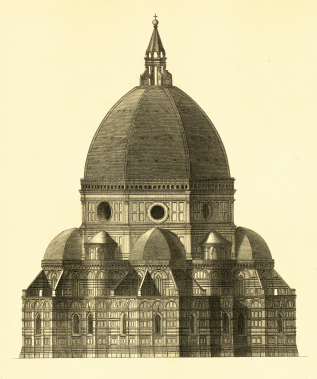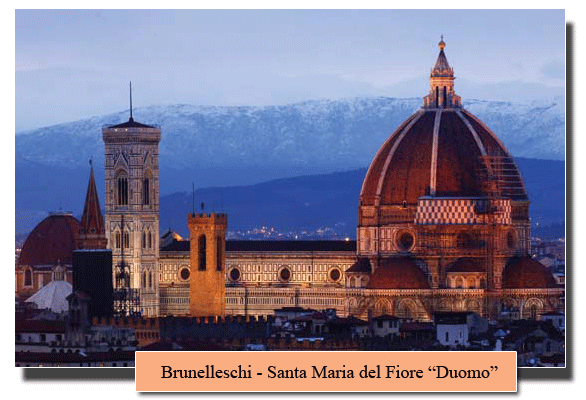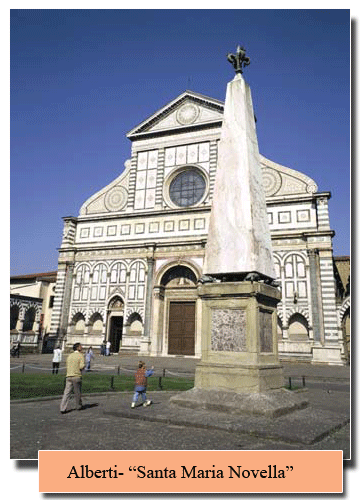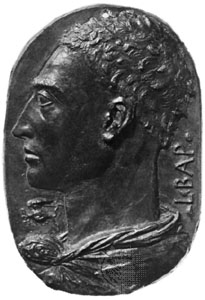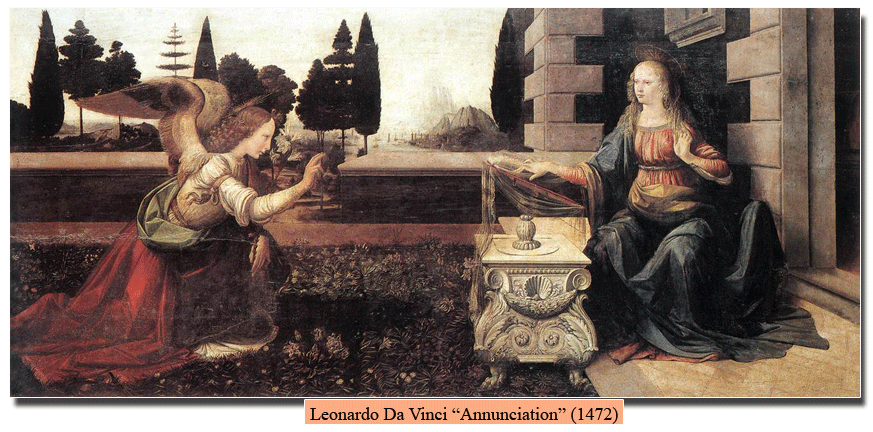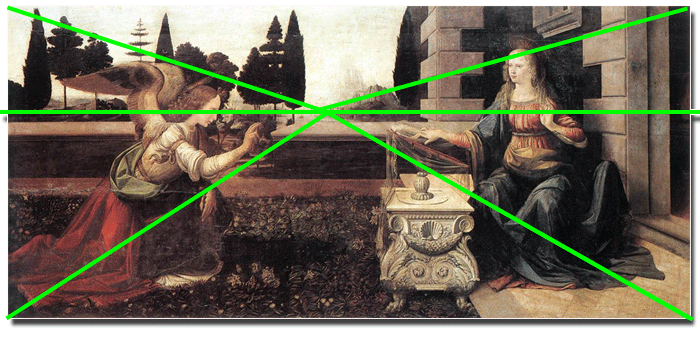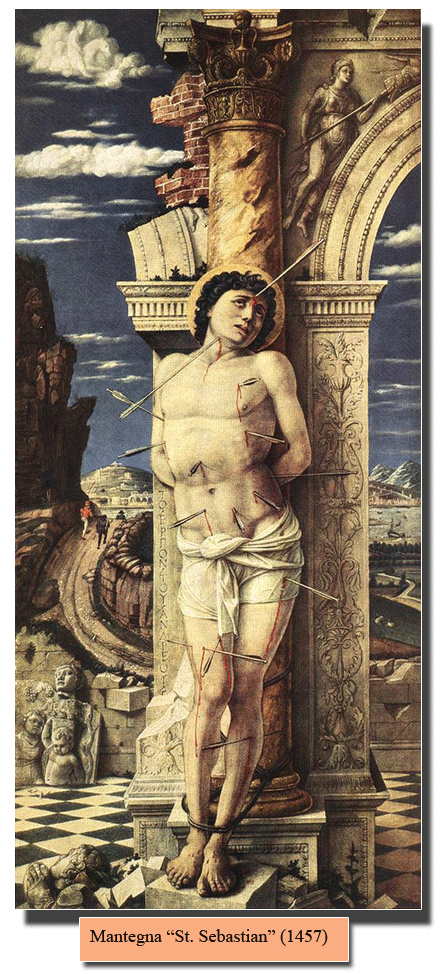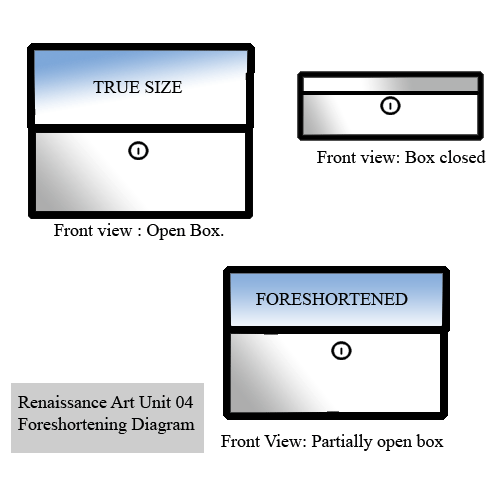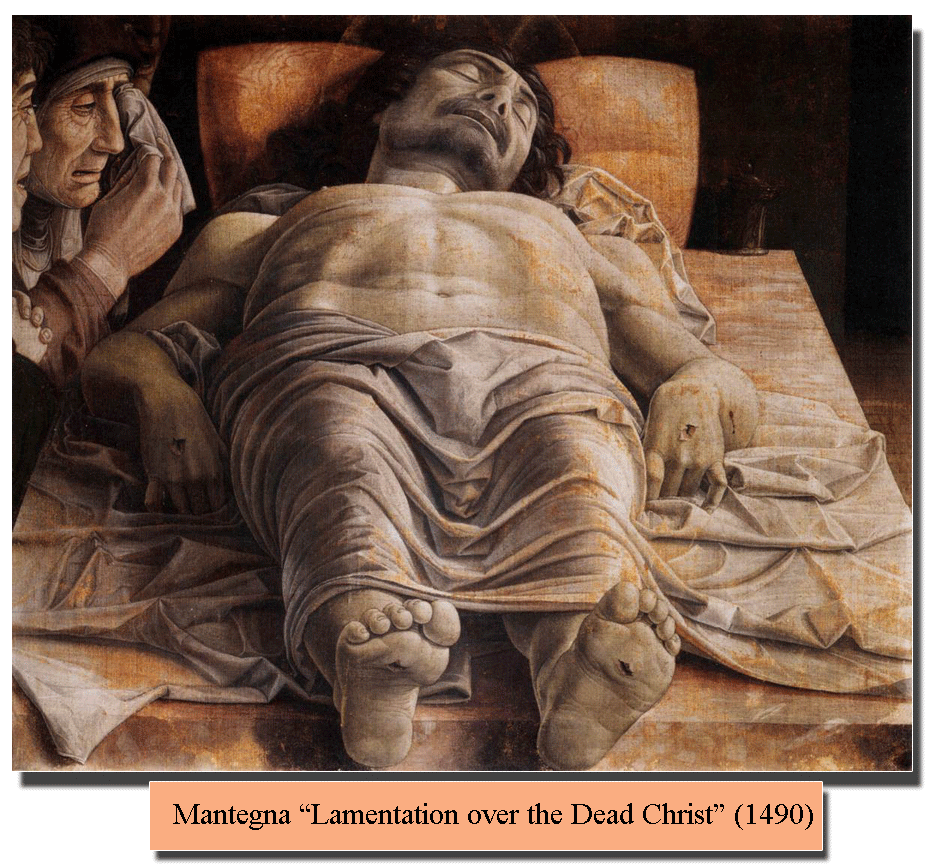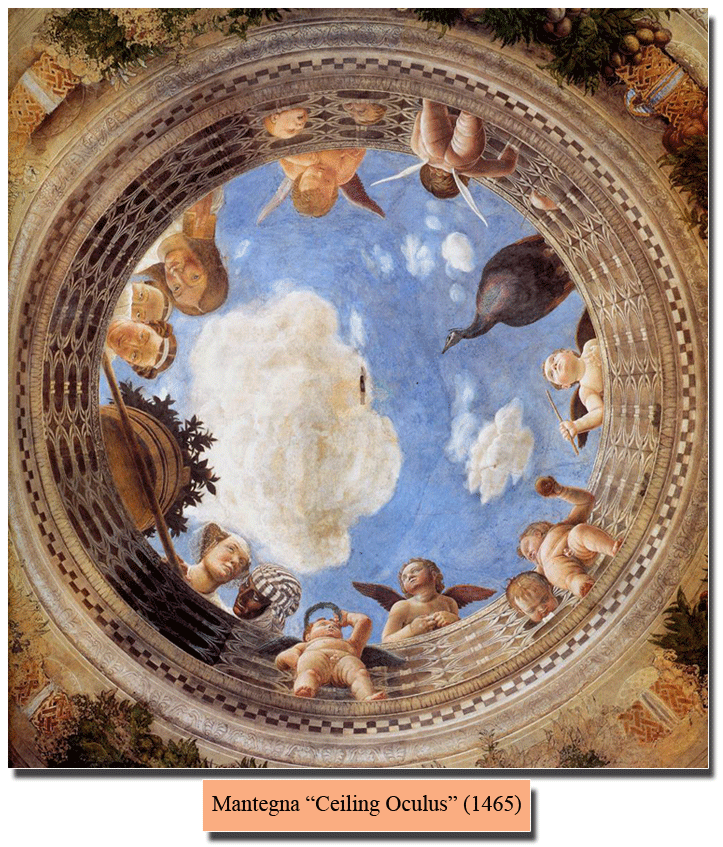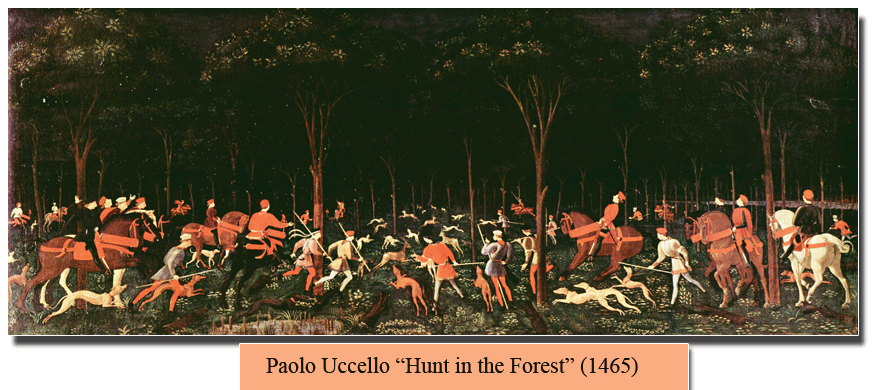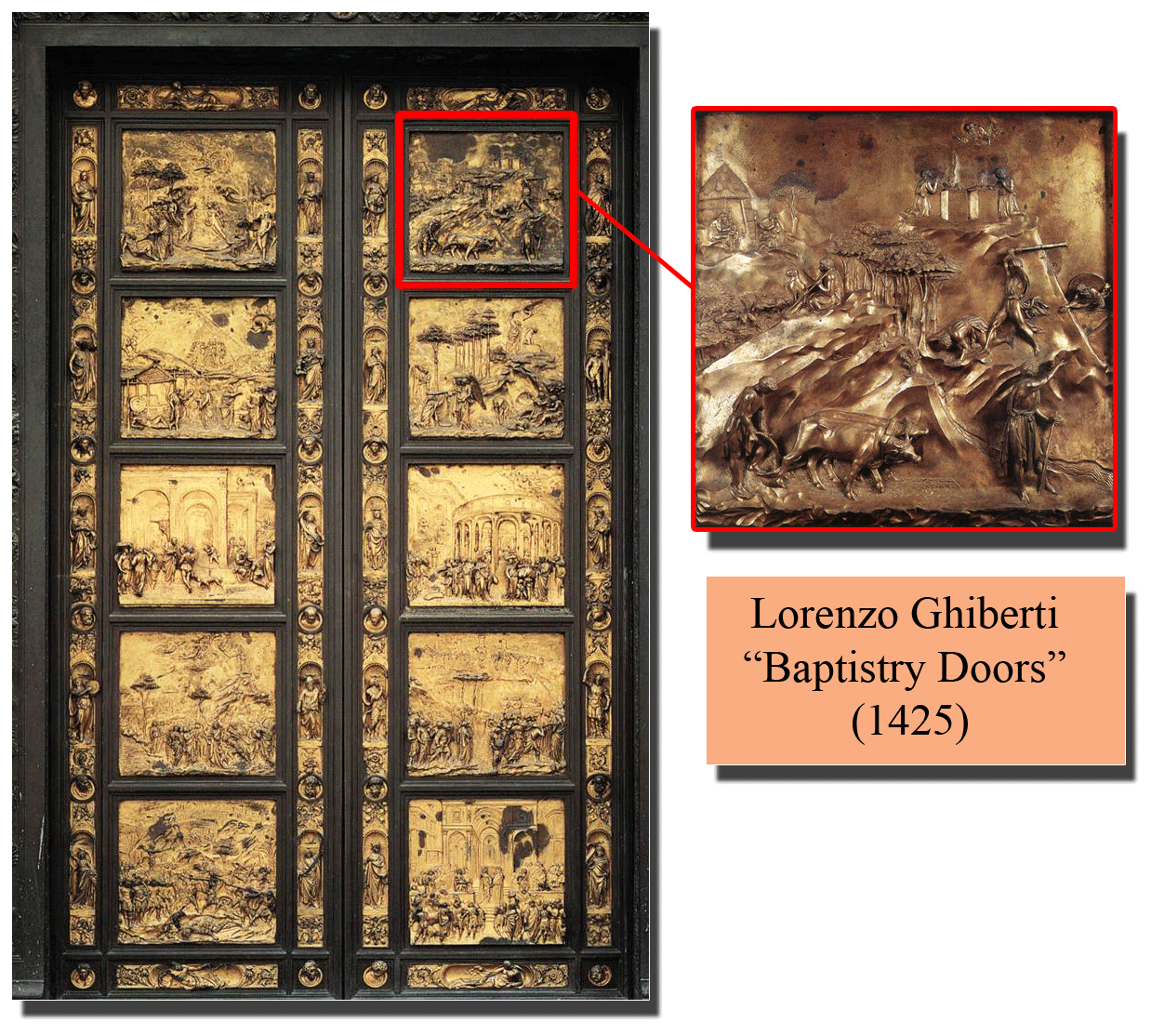The Renaissance Artist's Use of Line
Unit Overview
When an artist uses lines correctly, the lines create the illusion of distance, shape, or shadow. The line directs the viewer's eye to whatever the artist wants to emphasize. In this unit you will understand how artist's use line to manipulate an image. Perspective can accomplish many points of view, giving a painting a unique depth.
I. Brunelleschi and Alberti
Linear perspective, as you've learned, is a mathematical system for creating the illusion of space and distance on a flat surface. The system originated in Florence, Italy, in the early 1400s. The artist and architect Brunelleschi demonstrated its principles, but another architect and writer, Leon Battista Alberti, was first to write down rules of linear perspective for artists to follow.
Brunelleschi
Brunelleschi is most famous for his work on the Duomo, or the Santa Maria del Fiore church in Florence. Many architects swore that the actual dome could not be built. At that time, to build a dome that was that big and self supporting was impossible. Brunelleschi solved the problem of weight by constructing two domes. The first dome was built so that the construction workers could sit and work on the outer dome.
Alberti's book was called "On the Art of Building" (De Re Aedificatoria), and in 1485 it became the first book on architecture ever published. He was a Renaissance man in the flesh: he was wealthy, well educated, and good at everything he attempted. When he was twenty years old, he composed a Latin comedy that was mistaken for a Roman author. The publishers thought that they had discovered an ancient manuscript! His other book, "On Painting" (De Pictura) showed for the first time the rules for drawing a three-dimensional scene on a flat surface. His methods quickly became the norm of Renaissance painting. Leonardo da Vinci, for one, learned Alberti's system while serving as an apprentice in Florence.
II. Shape and Depth
Creating shape with line is not the same as connecting lines to create a square, a triangle, or a circle. To create a shape with a line refers to using perspective to make a line look as if it were going away from the viewer.
When artists use linear perspective, they must first imagine the picture surface as an "open window" through which to see the painted world. Straight lines are then drawn on the canvas to represent the horizon, typically at eye level, and "visual rays" are drawn that connect the viewer's eye to a point in the distance. Take a look at Leonardo Da Vinvi's "Annunciation".
The horizon line runs across the canvas at the eye level of the viewer. The horizon line, remember, is where the sky appears to meet the ground. The vanishing point, or focal point, is located near the center of the horizon line. The vanishing point, remember, is where all parallel lines (orthogonal) come together at the horizon line.
In Perugino’s "Delivery of the keys to the Kingdom", the artist uses line to direct the viewer's eyes to the building in the center. The vanishing point ends in the central doorway of the central building. The orthogonal lines of the arches on either side of the picture meet at the vanishing point of the door. Everything is geometrically correct and calculated.
Perugino's work is found in the famous Sistine Chapel, which is the pope’s personal chapel in Rome. In this image, Christ is symbolically giving Peter the keys to the gates of Heaven. In the Bible Christ says, “Upon this Rock (Peter’s name means Rock) I will build my church.” Peter was the first pope, and every pope who follows is said to take over the Throne of Peter. Christ appointed the popes to lead the Church on earth until He would return one day.
Below is "St. Sebastian" by Andrea Mantegna. St. Sebastian was an officer in the Roman army. When it was discovered he was secretly a Christian, he was shot full of arrows and left for dead. A woman came upon his body and found him to be still alive. He confronted the emperor and was then martyred again. He is remembered for his endurance and energetic way of spreading Christianity.
Mantegna was one of the most important painters of the early Renaissance. He was executing commissions on his own at the age of 17. Remember, the life expectancy was much lower then, so people wasted no time in learning a trade or craft. He is well known for his use of perspective.
Mantegna used foreshortened lines in this painting, or lines whose points are closer together. Foreshortened perspective is one of the basic, fundamental rules of drawing. For example, if two parallel line points are an equal distance away, a foreshortened line would have points that are closer to each other. In reality the foreshortened lines may be longer, but to create depth, they are made to look smaller.
Go to questions 1-5.
Much of what you see in nature is foreshortened. In order to understand this concept a little better, you are going to need some visual aids. The point of perspective is to diminish the length of an object in order to trick the viewer into thinking they are looking at the real thing. Take a look at the diagram below.
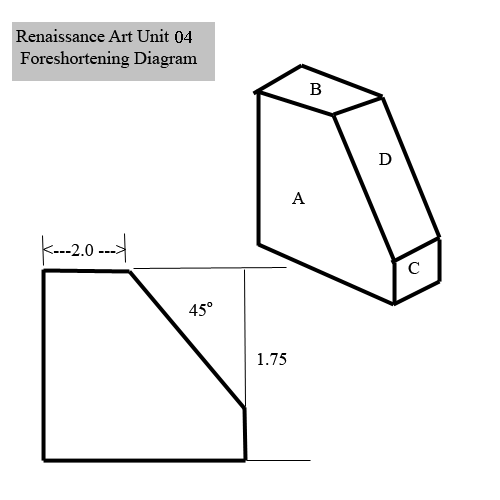
Look at surface D. You do not see its true shape, only the foreshortened view. The surface is not perpendicular to the plane of projection. The true length of surface D would only be seen from the top view looking down. Many objects contain surfaces that are not parallel or perpendicular to other surfaces, as shown here. When surfaces like surface D are drawn, that is, anything inclined or sloped, it will be foreshortened.
Take a look at the diagram below, depicting a simple music box. The apparent size of a surface will change when it is viewed at certain angles, like the lid to the box. When the lid is closed and when it is completely open, the dimensions shown are true. When the lid is partially opened, the depth is foreshortened. The width, however, stays the same.
Simply put, a foreshortened view of a surface is one in which the depth is manipulated to achieve a certain perspective. Let's take a look at another Mantegna Painting.
In this landmark painting, Mantegna has reversed perspective. The feet are smaller than the head! In reality Christ’s head would be smaller. He uses foreshortening to achieve this effect. The simple window-like framing creates an intimate portrait, depicting a shocking image of this swollen body, which would not appear so swollen had the perspective not been reversed.
Go to questions 6-8.
III. Line and Distance
The painting above was one of Mantegna’s most beloved works, not so much for its tremendous emotional impact, but for its unique perspective. This is a fresco which was commissioned to be painted on the ceiling. Drawing a cylinder in perspective is difficult, but this particular painting was especially challenging. This skylight is cone shaped, tapering off at a smaller hole at the top.
A great way to create depth with shapes is by making the size of the shapes smaller and smaller, all the while directing the viewer’s eye to the focal point. The circle, called an oculus, is made up of circles that are gradually, one after the other, getting smaller and smaller leading to one point in the “sky”, on which the artist wishes the viewer to focus.
The bodies are in a receding perspective. Fresco painters who painted on curved surfaces would depict bodies with lower limbs in the foreground, and heads and shoulders in the background. This way, the figures appear suspended in the air above the viewer’s head. Mastery of this technique, to paint from the bottom up, is notoriously difficult.
Another way to show distance with painting is demonstrated by "Hunt in the Forest", by Paolo Uccello. This piece shows how to produce the illusion of distance by using long thick lines in the foreground, and then progressively creating shorter, thinner lines into the background. Can you see the vanishing point? (Remember, the vanishing point is where the artist directs your eye along the horizon line.) The figures form a triangular shape and all converge in the distance.
Uccello was an apprentice to Lorenzo Ghiberti, famous for his bronze sculptures. He is well known for his "Baptristy Doors" (shown below). The doors, located in Florence, have a total of twenty eight releifs depicting scenes from the bible. Under him, Uccello developed an intense interest in linear perspective. In fact he was so interested in it, that his friends joked "He [Uccello] would stay up all night looking for vanishing points!"
Uccello
Go to questions 9-16.
Unit 4 Use of Line (Word Find) Worksheet Unit 4 Cornell Notes Worksheet
